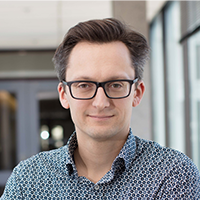Scale-up considerations for improved yield in upstream viral vector production
Cell & Gene Therapy Insights 2019; 5(12), 1719-1725.
10.18609/cgti.2019.179
Q Can the panel define their key challenges and benefits in migrating from adherent to suspension culture systems?
PJ: Beginning with the benefits, adherent processes are based generally on academic lab processes. They use planar technologies and flatware. They are generally serum containing. They tend to be in the 1–100 liters harvest volume range. And they generally include manual unit operations: they’re more laborious and involve multiple interventions, and because of these interventions, they tend to have be higher risk profiled.
This means there is a heightened risk of batch-to-batch variation, scale-up is limited, and you tend to get fewer doses – around 1–20 doses of lentiviral vector, for example – per batch. This contributes to a cost per dose that is usually very high.
Suspension processes, on the other hand, takes an approach more aligned with that exploited by mAbs and other commercial biologics in the past. Instead of a scaleout model, which would be the case with adherent, you have a scale-up model. They tend to be serum free. They have chemically defined media. They have been shown to be scalable – for example, technologies using single use systems can offer a range of 5–2,000 liters. They involve closed processing that can be automated, and there are reduced manipulations – all of which reduces the risk profile.
There are also different modalities you can use with suspension: batch, fed batch and perfusion. There is also the possibility of having inline monitoring using PAT tools, whereas with adherent, there are limited opportunities to actually monitor the process because they tend to be in monolayers.
Lastly, doses tend to be in the region of hundreds of doses or in some cases even a thousand doses per batch, meaning that the cost per dose can be much lower than it would be with adherent culture systems.
MK: I agree with all of Peter’s comments. I’d just add one point, which is the potential for suspension systems to not only reduce cost but to actually support market demand. For modalities that require large numbers of doses per year, that is crucial.
SA: One technology field I would add to the mix are the fixed-bed bioreactors we’ve seen coming through over the course of the last couple of years. They are already being used quite extensively. I see them as being somewhere in between the two: they provide an extension to what you can do with adherent cell cultures with increased surface area, but from an operational perspective, they are also as easy to operate (or as complex to operate, depending on your standpoint) as suspension systems. They also tend to have pretty high media consumption, because of the fact the small fabrics on which the cells grow can contain so many cells, and you have to somehow keep them all alive during the production run.
MB: We took the approach of bringing vector manufacturing in-house and making it a core capability – we have new manufacturing suites coming online in Q3 of 2020.
So it’s an exciting time for me and my team. We are essentially building this capability from the ground up, since there’s really no true blueprint for establishing a vector manufacturing process. We’re starting from an adherent process, which relates to Sven’s comments: we do see an advantage in going from an adherent model in flatware to an adherent bioreactor – we don’t really have to do much with media formulation or chemically defined media for that aspect of it, so we may be able to transfer our process a little bit more quickly and easily. However, when you think long-term, we’re definitely going to reach a decision point around getting out of the current cell stacks-hyper stacks model into a more suitable, scalableprocess.
One of the challenges we’re facing is designing a process with speed and flatwear does allow us to get into our clinical programs quickly. The idea is that we’ll eventually move into some sort of bioreactor process for all the reasons that Peter, Sven and Michael have raised. It just makes financial sense to do so and of course, we have a fiscal responsibility to our investors to make sure we’re doing everything we can to limit overall cost of goods.
MK: One further comment on the challenges side. Obviously, transitioning from serum-containing to serum-free manufacturing processes can result in product quality differences. One of the things to consider is a comparability assessment to ensure that first in human clinical data can be applied directly to follow- on clinical trials. That’s something that would need to be decided upon very much on a case-by-case basis, though.
Q Can you go deeper on the chief limitations of either system type? Where specifically is further innovation needed?
SA: What we have to keep in mind is that these are basically the same processes that were developed more than half a century ago for vaccine manufacturing. . Just from that perspective, it’s obvious that they are rather open processes. Clearly, we’re in the process of closing these as much as we can, but they tend to remain dependent on a lot of manual intervention, which is a risk.
PJ: I think there’s opportunity here for innovation.We’ve talked about working from batch, fed batch, also perfusion and continuous processing. Now, similar to what happened with monoclonals, I can see that there will being a real drive to try and reduce the cost of goods.
I also think that there’s going to be more innovation in terms of process intensification. And there’s going to be an increasing use of PAT (process analytical tools) to gain a better understanding of what’s going on in the bioreactors. There’s going to be a lot of work in the PAT area in particular. We ourselves currently have an Innovate UK project underway with Cell and Gene Therapy Catapult and Synthace, where we’re looking at the use of Raman spectroscopy, for example, to help us monitor what’s goingin a bioreactor.
A lot more work needs to be done in that area to increase the robustness of our processes. I think that will be the driver to gain greater control and to drive the cost of goods down.
RM: The fundamental need here is to increase the cell culture density whilst maintaining the environment, to maintain nutrient levels, and to remove all the waste products. Unless you’ve got some level of control over all of this, you’re going to have very limited ability to do scalable cell culture.
Obviously, there are some limitations with traditional static planar vessels, which we’ve covered earlier. You have very limited control in those systems – no online monitoring and they are very manual.
Fixed bed culture systems, work very well for adherent cells, especially if you’re harvesting a virus from the supernatant, but if you want to access and harvest virus from the cell biomass that’s much more difficult. You then have to look at optimizing some of the lysis steps and harvesting in that way.
In terms of the stirred-tank bioreactors (STRs), Peter is right that this is where you can really start looking at the control system. You can begin looking at more intensified processing and by using Process Analytical Technologies (PATs) you can understand your culture environment in much greater depth. An additional advantage is that you do have some true scale-down models, which allow you to understand whether your process at small scale is truly relevant at a larger scale. Again, you can utilize some PATs here in order to understand where and how you can achieve greater yield.
MK: Coming to the manufacturing facility itself, operators are a key point of focus for future innovation. Today, it’s a very inefficient, manually intensive process. Looking forward I can see robots, robotic interactions, taking care of basic manufacturing steps. I think if that’s done correctly, it can really increase the capacity of a facility on a footprint basis, because you can remove some of the restrictions around people walking through facilities and the like. I think it would also improve aseptic control.
Obviously, there’s a way to go in that area, but I do see a lot less manual intervention and a lot more robotic activities in the future.
MB: Downstream purification is my passion, so I tend to look at where a lot of these technologies will feed into downstream purification processes. And I think about comparability: how are these new technologies or applications from the tool providers going to help comparability from vector to vector? Experience has taught me that the transgene has the ability to create havoc in terms of how a vector behaves with the platform process you are developing. For me, that’s the sort of thing we have to think about: what’s the right model for looking at different vectors to ensure they fit a platform?
Q What are the keys to success when approaching scale-up of suspension culture system, particularly in terms of maximizing yield?
RM: It’s important to understand that scale-up is not solely about increasing numbers – neither of the cells or the viral vector particles. It’s really a case of looking at every single step of any given process and how that impacts your critical parameters.
We’ve mentioned that there is a difference between adherent and suspension systems in terms of scalability and your choice of which system to use depends on the batch size you ultimately need for your target indication(s). But again, I think you need to clearly understand exactly what you mean by scale. For example, does a four-fold increase in scale mean the same increase in surface area for an adherent cell system? Does it mean four times the volume? Does it mean four times the cell density? When you’re looking at scaling-up, are you really looking at the geometric similarities across all the different scales to ensure it’s a truly scalable system?
You really need to understand all the key parameters and critical factors you’re looking at. Some of them might be scale-independent – for example, media composition might not be relevant to the scale – whereas others might be scale-dependent. For example, in a suspension culture system, mechanical stress and agitation rates can play a significant role. Viral vectors and viruses are very susceptible to sheer stress, so what’s OK for your host cells isn’t necessarily OK for the virus. In which case, to start de-risking your entire process, you can look at the agitation rates, ideally in a fully representative scale down model. This would allow you to understand the relationship between each scale.
I would add that we’ve seen in the outcomes of recent conference workshops and literature that there’s a general expectation we’ll see a mix of production technologies in viral vector manufacturing moving forward. However, we think suspension-based upstream processes will probably become the industry standard, and that a trend towards continuous bioprocessing approaches will help transform the field in terms of significantly reducing manufacturing costs.
PJ: I’d just like to widen it slightly. You also have to take into account the actual initial vector design and its optimization: the viral serotype and pseudotype as well as the transgenic sequence composition and size can also affect your titers. In the past, we’ve also found that the amount of vector produced upstream can vary depending on the transgene encoding, especially if the active protein expressed in the production cell line is constitutive, or if a leaky tissue-specific promoter is employed. So it’s not just the actual optimization of the bioreactor and conditions – you also have to look further upstream at the vector design as well as at optimizing your cell line, especially if you’re going to work towards a scalable producer cell line.
Of course, you also have to consider the downstream bioprocess. As we’ve discussed, adherent processes involve serum, which can lead to problems because it co-purifies – it comes down with your vector and presents some difficulties as you have to make sure it’s subsequently removed during processing.
As Ruth mentioned, you’ve got issues with shear sensitivity, especially with lentiviral vectors, but you also have to deal with temperature sensitivity, product stability issues, and freeze-thaw sensitivity. And you can only operate within a very narrow salt range, because that can affect your virus as well.
So there are lots of different issues and considerations when it comes to scaling. It’s not just the suspension culture itself, but the end-to-end process you have to think about.
SA: I want to highlight the current general lack of process and product understanding in the field, which is maybe not limiting us yet but will do in the future. We have a lot of knowledge about upstream processing and how to scale-up from an equipment perspective, but we certainly do not yet understand how we can improve these processes in terms of what is happening at the molecular level. What do the cells actually need in terms of media and media composition to produce, and to do so robustly? We’re also all familiar with the challenges in generating stable cell lines. When I think about the concept of developing these processes and of at least moving towards more continuous ways of manufacturing, these are the things that I think will limit us. But I think that even interim tasks, such as reducing or removing the number of manual operator interventions, are not yet possible with today’s processes because, to put it bluntly, the only thing we currently understand is the amount of vector we’re supposed to be making at a given point in time. Why we’re doing so is not necessarily clear to us.
Another point on the purification side. One of the challenges I see in the field is not what you make, it’s what you keep at the end of your purification.
I think we all struggle with nonspecific binding of particles to matrices during cell screen purification steps. I think we need to look a little closer at how we purify, and how we have unintended loss of material. Because I think if we’re getting a 30% yield, which most people would be happy with, that’s obviously reducing the productivity by three-fold.
So I think we need to start looking at chemical interactions with matrix components in our purification schemes.
RM: Just to reiterate what Peter was saying, whatever upstream process you optimize and choose to use will have an impact on your downstream processing. And I think a lot of people, certainly in the early development stage, don’t understand that if you optimize one it may not be optimal for the other. It would help if there was more sharing of information and for process scientists and engineers to understand a bit more of the basic research, and vice versa, for the bench scientists to have a better appreciation of what’s happening at a commercialized production scale.
So as Sven mentioned it’s just making sure there is a good understanding of what is happening. The interaction with different materials etc… so it’s a very important point to understand the impact of each of these different steps on each other.
PJ: Can I just add something else. think what you’re finding, and we mentioned it a couple of times now, about improving our process, product understanding, and I think there needs to be a lot more fundamental work carried out, really understanding how vector production and the mechanics of vector production and how vectors are produced and then secreted or produced within the cell.
We at Oxford Biomedica are spending some time on this. We’re looking at using proteomics, transcriptomics, metabolic flux analysis, to really understand what the limiting factors are either in the cell or in the vector design which means that we try then to get an understanding of what metabolites are important, to understand what’s important in our media and also in our feed design, and whether or not we can actually make a better influence of that, a fundamental layer, in terms of making our bioreactors upstream more productive. And that’s where I think a lot more understanding is required.
MB: Mike Kelly made a very interesting point about the art versus the science of viral vector manufacturing – I think that’s true. I also agree with the comments relating to the amount we don’t yet know – I think that’s a fair reflection of where the field is today. For us to build sustainable, scalable manufacturing platforms and processes, we must be able to take the high degree of technical art out of the equation. Otherwise, I think the necessary cost of goods reduction and associated automation of manufacturing processes cannot be realized.
Q Building on the cost of goods topic, how can we optimize cost control when it comes to viral vector manufacturing?
MK: Most if not all of the panel members are currently working in the clinical development setting and traditionally, we as an industry typically don’t worry too much about cost of goods during clinical manufacturing. However, if you look ahead to commercialization and the pressure that the payers are under in terms of reimbursing these novel biologics, in order to have a feasible business we have to be able to make them at a reasonable cost. You just can’t keep increasing the cost of novel drugs because the cost of manufacturing is high. Obviously, that burden becomes even larger with higher doses. As we’ve already established, in order to try and increase process productivity, we have to increase our understanding of the biology of vector production.
I think that one of the big advantages of suspension systems is that you can increase cell density per volume. We’ve clearly got to work towards that. We’ve also got to try and improve how much vector we keep through the purification process.
I would also return to Peter’s comments about vector design. We develop therapeutic strategies very early in the drug development lifecycle: we choose capsids, envelopes, promoters that are designed to deliver drugs. But I think we probably don’t spend as much time thinking about how that design will result in a feasible business opportunity downstream. I think one of the areas we should focus on is how to reduce the dose we need to administer by being more efficient at targeting – by choosing different envelopes, different capsids in the case of AAV, and by looking for more efficient routes of administration. The latter is key from both efficacy and safety standpoints, of course.
MB: Being a start-up company, we have to be very mindful of dollars spent. Tracking and developing a process from the ground up is certainly going to involve some spend, but how do you do that in a very controlled manner, and how do you design a process without a significant impact on your overall budget?
One of the aspects that comes to mind is speed to market. That’s something we’re trying to optimize here – establishing a process in less than a year and a half and having it ready for manufacture is a pretty significant undertaking for us.
Another important consideration for cost of goods is what you in-license – for example, there are commercially available cell lines out there, but they come with a hefty price tag. Trying to strategize around quickly establishing a process whilst taking such cost-related factors into consideration is certainly challenging.
SA: Manufacturing costs are a clear issue for industry but quite honestly, they were even more of a concern in my previous role when I was wearing a government hat. We spent a great deal of time debating the extent to which healthcare systems such as ours (Canadian) could accommodate products with the price tags we are seeing right now.
However, when it comes to manufacturing cost control, we have the example of the mAbs area to encourage us. It did take decades for the mAbs to get there, though – I’m hoping we in cell and gene therapy can be quite a bit faster.
PJ: Regarding lentiviral vectors and other vectors used in cell therapy, I think it’s important to note that while we’re very much looking for forward momentum in terms of trying to optimize titers and the productivity of our vector processes, there is also a degree of reliance on the cell bioprocessing side to optimize in terms of the amount of vector they require. There is, or should be, a push-pull mechanism at work in this regard. Again, it brings us back to the importance of looking at the whole process end-to-end.
RM: Where are most of your costs coming from? It will depend on the scale of your manufacturing, of course. Are most of the costs coming from the large GMP facilities that you may need, or is it the buffer, media, in your upstream processing? If it’s the latter, you need to weigh up that cost against the benefit you might be receiving in the form of more efficient production. Going back to PATs, they can help optimize your buffer and media usage.
In other words, i’s a case of balancing all of the elements that impact cost of goods. Facility design is another important consideration: understanding how a production process is going to work and what yields are achievable at different scales so you can optimize your footprint usage.
MK: Continuous manufacturing (CM) strategies have been quite successful in the biologics space. It’s not an area in which the gene therapy world has really invested as yet, and I think that’s something we should be looking at. However, I do think that CM is something that’s more amenable to future cell lines rather than transient transfection.
I would also echo Peter’s comments: I do think we can do better on the cost of vector, but in the ex vivo gene therapy world, especially with autologous products, it’s only one component of the high cost of patient-specific cell-based therapy manufacture.
I think a lot of the vector bioprocessing approaches we’ve taken as a field are not immediately scalable, and so we may need to think a little bit differently moving forward about how we start.
My final point is that everyone is trying to scale-up today to meet market demand. However, given the one-time administration of cell and gene therapy products, often for rare indications, there is the potential to go quite rapidly from treating the prevalence population where demand is high to the incidence population where demand is significantly lower. In other words, while the short-term struggle is to scale-up, if we’re successful in that endeavour we may well find a situation in the future where we’ll have to scaledown again. I think it is important to bear that in mind as we validate our processes.
PJ: I agree. I think the other thing you have to take into account is how to design your process into your facility. You can use a sort of overlapping process. You can use a continuous cell build approach. So there are many ways of actually increasing productivity and improving your overhead recovery.
A further aspect is the development of rapid analytics with their potential to minimize development and scaleup times, thereby helping to reduce costs. There’s also the possibility of automating analytics so you get a higher throughput, reduced turnaround times, and therefore cost savings per sample
So again, there are many levels to trying to drive costs down, including reducing the cost of quality and trying to reduce the timeframe for product release within the manufacturing environment.
Q Can the panel talk some more about the key process analytical considerations for scale-up?
MB: For me, the main goal is titer – that’s been the primary driver in establishing our vector process. Obviously, that’s while keeping considerations around purity and safety well in mind – we don’t want to develop a process that’s just high titer, but results in a terrible final product. In order to have that in place, we need a strong analytical development team to drive the development of the robust assays to support us along the way.
There’s a lot of ways to get to your final titer. What is that final titer and what does it mean? You have a (genome copies) titer, you can have a full assay, or a cell culture-based titer with a PCR end point, or a functional titer. You have to think about the characterization around the cell line and how that leads to the robustness of the assay. And then how do you tie everything together? I think that’s the struggle I have as a non-analytical person: understanding the difficulties that our analytical team have to face with getting these assays up and running. Then there is training operators and standards, too.
These have been the key considerations that our analytical team has been trying to resolve as rapidly as possible to support us. So I’m putting a lot of emphasis on process development based on titer, with purity and safety in mind, and I’m placing a lot of trust in the assay as it’s still being developed in order to drive us towards a manufacturing process.
RM: I’d just add here that there’s a difference between what you’re looking at during the process and what you require at the end for your QC. If you’ve got better analytics throughout the process, it can help you in some ways to ‘fail early’ – in the event that your process isn’t working, if you understand what your readout is saying, you can then optimize or change things in that particular process’ parameters. But the parameters are different for QC testing and QC testing is looking at product definition rather than process information.
The other key thing to consider is using specific reference standards if available. This goes across the board: ‘what is a cell count?’ ‘what is a viral titer?’ ‘is your viral titer the same as someone else’s?’ ‘how do you compare processes, including across sites, especially if they are using different analytical equipment?’
PJ: I do think the current analytical toolkit is lagging behind where we need it to be from the industrial viewpoint. WWhere we are now is that we’ve developed specific platform assays which in many cases are compendial(safety) assays covering endotoxin, bioburden, sterility, mycoplasma (absence of RCL and absence of adventitious agents). We havemore specific product and impurity assays such generic DNA detection method (PicoGreen®), residual plasmid DNA (KanR qPCR) and residual host cell DNA (18S qPCR) etc. Then we’ve got the product- specific assays, including potency and identity. What we’re trying to do is to also bring in automation, because we need to bring in higher throughput as I’ve said and reduce the cost of analyzing each sample. We also need to use automation to reduce our operator-to-operator variability, and to improve our reliability and reproducibility. However, that also opens up another issue and area for discussion: it’s all well and good running all these analytics, but we then need to do something with the data. We need to streamline our data analysis.
I can foresee a time when we’ll probably see more involvement of mass spectrometry (MS) as (an analytical) tool, next generation sequencing as well. And I think what you will see over the next few years is a much greater emphasis on trying to develop more rapid analytics, not only to monitor the process but also for product release.
SA: For me, rapid analytics means real-time monitoring of processes. I think the work Peter mentioned earlier on Raman spectroscopy is a good example of this.
We have done work on using capacitance, which provides good information on what’s happening at the cellular level. However, we’re lacking the methods to provide real-time information about how much virus is coming out of your cell – maybe this is where Raman or other technologies can assist in future. Obviously, we’d have to combine that with rapid analytics, because you probably cannot think about doing process analytics without having a cell-based assay in place. That would ideally be faster than what we’re doing right now.
Regarding the data processing and analysis challenge, I think we’ve seen in other fields where these sorts of technologies are more established that this is not insurmountable.
MK: I agree with everything I’ve heard. One of the things I worry about is that the amount of time from manufacturing to release of a viral vector is somewhere between 3 and 6 months. I’m not sure exactly what the industry standard is, but obviously, that’s a significant issue.
In addition, the actual result is something of a black box. I think the lack of in process controls (IPCs) to really understand what’s going on during the manufacturing process is an issue – our ability to predict and anticipate failures is really not where it needs to be. There’s work to be done there.
I think we all have this vision of an artificial intelligence- managed, automated robotic process. For that to be a reality, though, the analytics have to be better – more accurate and precise. And we have to have more real-time monitoring capability. We’re not close to that today. When things take a long time, that usually means the cost is high as well, so I think we have to do better there.
One other point on the analytics side: we obviously all know about accuracy and precision, but also some of the methods are very inefficient and require huge amounts of vector. We need to have analytical methods that don’t use up the majority of a batch. I think the average right now is about 25% of a batch is used for dosing patients, the rest is used for characterization. There’s a clear pathway to reducing cost by reducing the amount of vector product lost to non-clinical uses.
Q What would be at the top of your personal wish-lists in terms of novel innovation in the vector bioprocessing area?
PJ: A lot of the technologies we’re currently using are based on ‘old school’ biologics – on understanding gleaned from the wider biologics area, such as the vaccines field.
The tool suppliers are beginning to step up in terms of trying to come up with better technologies for making and purifying vector. I think what you will see going forward is a lot more collaborations between suppliers and companies who are producing a vector to try to come up with better ways of actually making the vector in the first place.
I think we will make continue making marginal gains towards an end-to-end, holistic approach. I see a lot more of that work going on in all the different areas we’ve discussed today: vectorology (vector design and optimization), cell line development, process innovation and analytics.
SA: My wish-list is easy to say but probably rather difficult to achieve!
I’d be very interested in seeing investment in developing better cell culture media and feeds, specifically tailored to viral vector production.
The second point is I’d like to see stable cell lines that produce not just for a couple of days, but for weeks at a time – that would truly enable continuous manufacturing.
My third point is devices that are specifically tailored to viral vectors. For example, perfusion devices, or perhaps completely different downstream processing unit operations to those we currently employ – tools that help us to really view and treat the vector as a product. This is probably more important for lentiviral vector because of its poor stability.
Fourthly – and this one is probably impossible to achieve, but we’ve touched on collaborations today and I’d like to see an open, collaborative forum that would allow people to discuss what their current problems are without IP constraints. I know we are not going to get there, quite, but maybe we can take baby steps because I truly believe that none of the organizations that are currently in this field will be able to fix all of these problems alone. The more discussions we can have around this, the better it will be for the entire field.
MK: The burden of manufacturing is incredibly high, so I would like to see the vectors that we’re using being more efficient.
In other words, I think we need to work on this from both ends: I think we need to improve scalability and everything else to do with vector production, but I also think we need to try to find ways of reducing the amount of burden
- for manufacturing costs; and
- for patient safety.
I would like to see better designs and more efficient ways of delivering vectors. I wholly agree with Peter – there’s no one switch that we can turn on that will solve our problem. I think we need to look at it from an endto- end perspective. But I would like to begin with the end in mind, which means requiring less vector per patient.
MB: Sven stole my thunder there a little bit on collaboration! I was thinking about the various consortia in the monoclonal antibody industry, having participated in those from the CDMO side. I think that a free-to-share information network for the cell and gene therapy space would be very nice to have.
I also think about rapid analytics. You can only get so much information out of a p24 ELISA kit – having real- time monitoring available to help you understand how well your scale-up process really works would be great. You put a lot of time and effort into the small-scale model, do the engineering runs to make sure it’s suitable for transfer into manufacturing, and then you start your manufacturing campaign, but you don’t really know anything until you’ve got that bulk drug substance tested. And a lot of that test material goes out of the door, as Michael mentioned. That effectively means a potential patient isn’t getting treated because of the analysis that goes into the final product, which is a very hard thing to reconcile.
Authorship & Conflict of Interest
Contributions: All named authors take responsibility for the integrity of the work as a whole, and have given their approval for this version to be published.
Acknowledgements: None.
Disclosure and potential conflicts of interest: The authors declare that they have no conflicts of interest.
Funding declaration:The authors received no financial support for the research, authorship and/or publication of this article.
Article & copyright information
Copyright: Published by Cell and Gene Therapy Insights under Creative Commons License Deed CC BY NC ND 4.0 which allows anyone to copy, distribute, and transmit the article provided it is properly attributed in the manner specified below. No commercial use without permission.
Attribution: Copyright © 2020 Ansorge S, Burnham M, Kelly M, McDermott R & Jones P. Published by Cell and Gene Therapy Insights under Creative Commons License Deed CC BY NC ND 4.0.
Article source: Transcript of a Roundtable “Scale-up considerations for improved yield in upstream viral vector production”. Recorded Nov 5 2019.
Publication date: February 05 2020.







